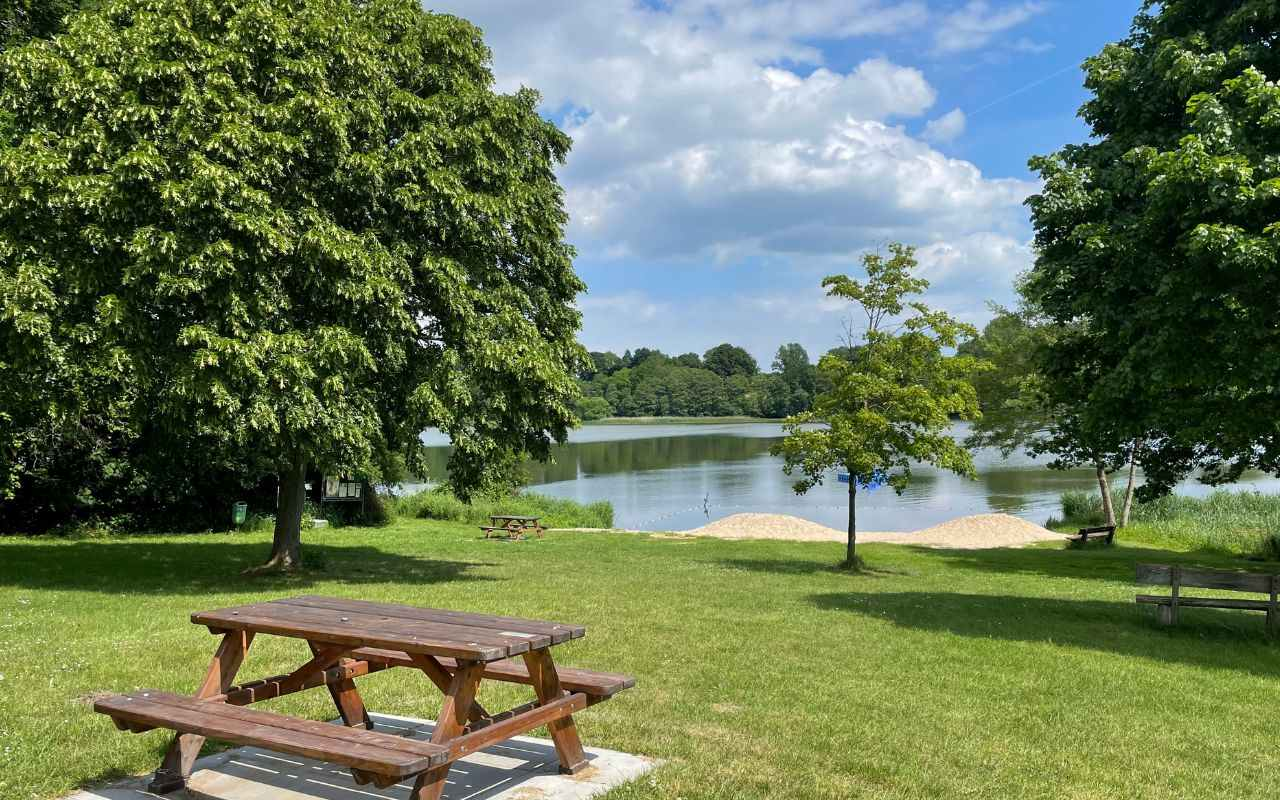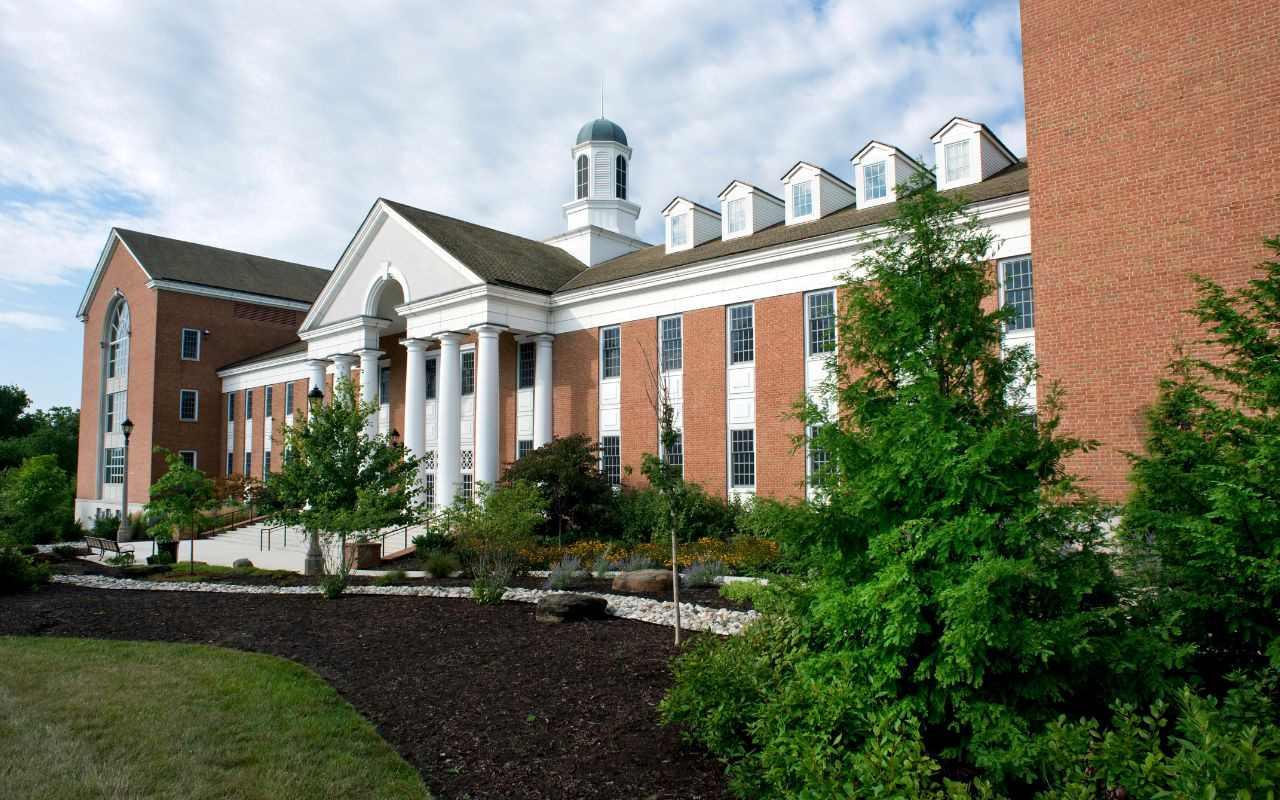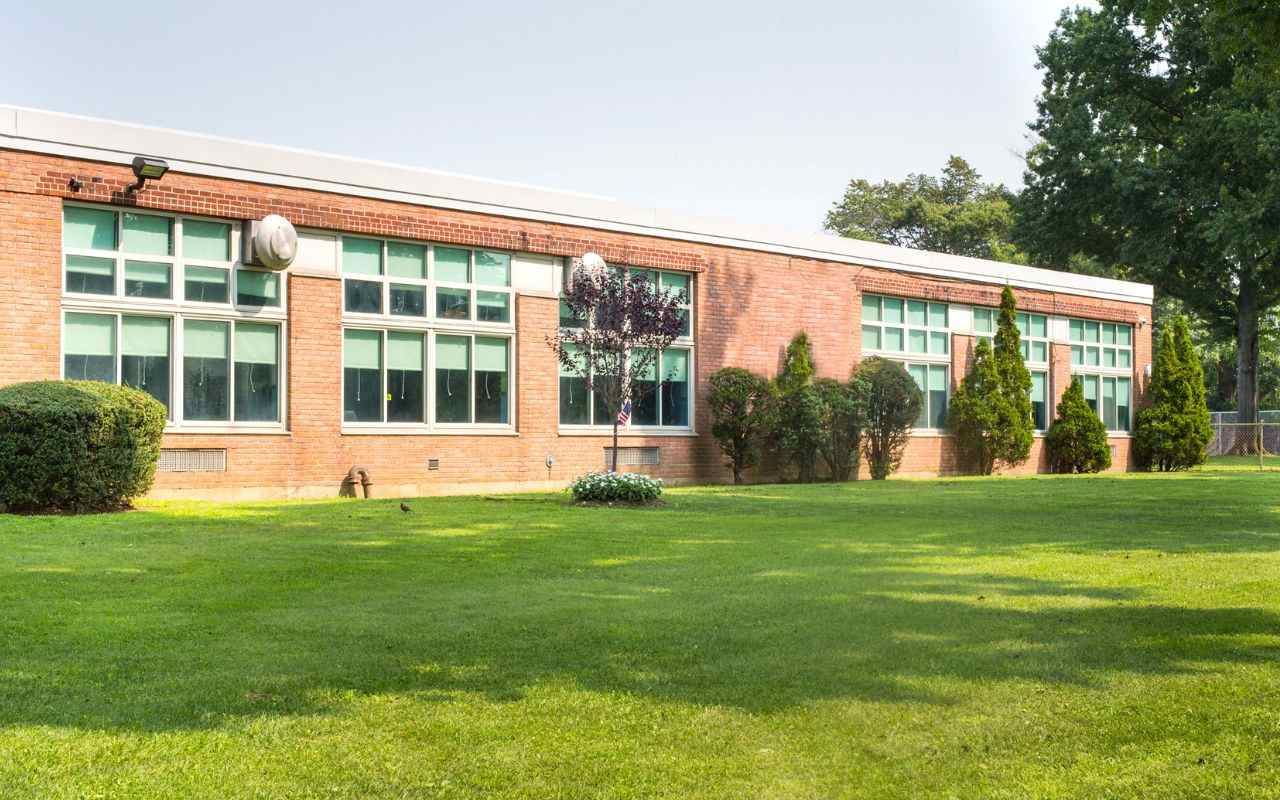Top Scholarships in Maryland in 2024
The Best Maryland Scholarships with Upcoming Deadlines100% Free.
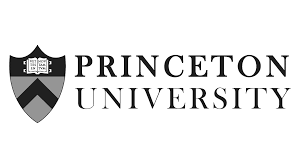






Valiyah Young Scholarship
Funded byValiyah YoungThis scholarship seeks to support students from the DMV area so they can complete their college degrees and launch their careers.Funded byValiyah YoungThis scholarship seeks to support students from the DMV area so they can complete their college degrees and launch their careers.Eligibility Criteria:
- Education Level: High school senior or 2/4-year undergraduate student
- State: From the DMV area (D.C., Maryland, Virginia)
- GPA: 3.0 or higher
Amount:$500Deadline is Approaching! 25 days leftOne Click Apply1
Audrey Sherrill & Michael D'Ambrisi Music Scholarship
Funded byThe Sherrill Family and FriendsThis scholarship seeks to honor the lives of Audrey Sherrill and Michael D’Ambrisi by supporting students who are pursuing musical careers.Funded byThe Sherrill Family and FriendsThis scholarship seeks to honor the lives of Audrey Sherrill and Michael D’Ambrisi by supporting students who are pursuing musical careers.Eligibility Criteria:
- GPA: 3.0 or higher
- Education Level: Undergraduate
- Field of Study: Music Performance, Music Education, Music Therapy, or Jazz Studies
- State: Delaware, Maryland, Pennsylvania, New York, or Massachusetts
Amount:$10,500Deadline is Approaching! 26 days leftOne Click Apply2
Gloria Rickett Memorial Scholarship
Funded byRickettThis scholarship aims to honor the memory of Gloria Rickett by supporting students who are preparing to begin college.Funded byRickettThis scholarship aims to honor the memory of Gloria Rickett by supporting students who are preparing to begin college.Eligibility Criteria:
- Education Level: High school senior
- State: Maryland
- Field of Study: Childhood development, nursing, or the arts
Amount:$10,000Deadline:Aug 30, 2024One Click Apply3
Cat Zingano Overcoming Loss Scholarship
Funded byCat ZinganoThis scholarship will be awarded to one high school or undergraduate student who is fighting through their own loss of a close family member, legal guardian or loved one, and is in need of financial support for their education as they move forward.Funded byCat ZinganoThis scholarship will be awarded to one high school or undergraduate student who is fighting through their own loss of a close family member, legal guardian or loved one, and is in need of financial support for their education as they move forward.All students are eligibleAmount:$10,000Deadline:Jul 20, 2024One Click Apply4
Sandra West ALS Foundation Scholarship
Funded byWest FamilyThis scholarship aims to support college students who face the dual challenges of academic pursuit and familial responsibilities during a difficult time.Funded byWest FamilyThis scholarship aims to support college students who face the dual challenges of academic pursuit and familial responsibilities during a difficult time.Eligibility Criteria:
- Background: Child of a parent with ALS
- Financial Status: Family facing financial hardship
- Education Level: Current or prospective college student
Amount:$15,915Deadline:May 31, 2024One Click Apply5
A Heroes Family Scholarship
Funded byFirst Responders Family FoundationAs one small way to help the families of first responders, the A Heroes Family Scholarship exists to provide financial support for a student who has lost a parent or spouse to an on-duty tragedy of a first responder.Funded byFirst Responders Family FoundationAs one small way to help the families of first responders, the A Heroes Family Scholarship exists to provide financial support for a student who has lost a parent or spouse to an on-duty tragedy of a first responder.All students are eligibleAmount:$1,000Deadline:Jun 20, 2024One Click Apply6
First-Generation College Students Scholarship
Funded bywiseGEEKThe First-Generation College Students Scholarship is meant to support and encourage these students as they take on the biggest educational milestone thus far in their lives.Funded bywiseGEEKThe First-Generation College Students Scholarship is meant to support and encourage these students as they take on the biggest educational milestone thus far in their lives.Eligibility Criteria:
- Background: First-generation college student
- Education Level: High school senior or current undergraduate student
Amount:$500Deadline:Jul 15, 2024One Click Apply7
Raquel Merlini Pay it Forward Scholarship
Funded byraquel MerliniThis scholarship is designed to support one divorced woman or a single mother with an opportunity to pursue the education she deserves.Funded byraquel MerliniThis scholarship is designed to support one divorced woman or a single mother with an opportunity to pursue the education she deserves.Eligibility Criteria:
- Marital Status: Single Mother and/or divorced
- Pending major: Pursuing or considering pursuing a degree in the medical field
Amount:$1,000Deadline:Jun 24, 2024One Click Apply8
CapCut Meme Master Scholarship
Funded byBold.orgThis scholarship seeks to celebrate humor and creativity by showcasing your funniest CapCut memes!Funded byBold.orgThis scholarship seeks to celebrate humor and creativity by showcasing your funniest CapCut memes!All students are eligibleAmount:$500Deadline is Approaching! 12 days leftOne Click Apply9
“Stranger Things” Fanatic Scholarship
Funded byBold.orgThis scholarship seeks to support fans of "Stranger Things" to ease their pursuit of higher education.Funded byBold.orgThis scholarship seeks to support fans of "Stranger Things" to ease their pursuit of higher education.All students are eligibleAmount:$500Deadline is Approaching! 12 days leftOne Click Apply10
Zendaya Superfan Scholarship
Funded byBold.orgThis scholarship aims to support students who are fans of Zendaya and her multifaceted career.Funded byBold.orgThis scholarship aims to support students who are fans of Zendaya and her multifaceted career.All students are eligibleAmount:$500Deadline is Approaching! 12 days leftOne Click Apply11
Eras Tour Farewell Fan Scholarship
Funded byBold.orgThis scholarship seeks to recognize Swifties who have been impacted by the Eras Tour by supporting them in their pursuit of higher education.Funded byBold.orgThis scholarship seeks to recognize Swifties who have been impacted by the Eras Tour by supporting them in their pursuit of higher education.All students are eligibleAmount:$500Deadline is Approaching! 12 days leftOne Click Apply12
"The Summer I Turned Pretty" Fan Scholarship
Funded byBold.orgThis scholarship seeks to support students who feel a strong connection to Belly's journey.Funded byBold.orgThis scholarship seeks to support students who feel a strong connection to Belly's journey.All students are eligibleAmount:$500Deadline is Approaching! 12 days leftOne Click Apply13
Mike Braem Memorial Scholarship
Funded byBraem FamilyThis scholarship aims to preserve Mike Braem’s legacy by supporting students pursuing careers in law enforcement.Funded byBraem FamilyThis scholarship aims to preserve Mike Braem’s legacy by supporting students pursuing careers in law enforcement.Eligibility Criteria:
- Education Level: High school or undergraduate student
- Desired Career Field: Law enforcement
Amount:$1,800Deadline:Aug 27, 2023One Click ApplyScholarship is awarded to
2 winners14
WTFintech? No-Essay Scholarship
Funded byBold.orgThis scholarship is perfect for anyone interested in entrepreneurship, tech, and finance news.Funded byBold.orgThis scholarship is perfect for anyone interested in entrepreneurship, tech, and finance news.All students are eligibleAmount:$1,000Deadline:Oct 01, 2022One Click ApplyScholarship is awarded to
1 winner15
The Austin Hays Scholarship
Funded byAustin HaysThis scholarship seeks to lend a helping hand to students in the state of Maryland so they have the resources necessary to pursue higher education.Funded byAustin HaysThis scholarship seeks to lend a helping hand to students in the state of Maryland so they have the resources necessary to pursue higher education.Eligibility Criteria:
- Location: Maryland
- Financial Status: Low-income
Amount:$20,450Deadline:Aug 28, 2022One Click ApplyScholarship is awarded to
1 winner16
Kate Szuberla Jauch Scholarship
Funded byKathleen GravelleThis scholarship seeks to honor the memory of Kate Szuberla Jauch by supporting future nurses as they complete their education.Funded byKathleen GravelleThis scholarship seeks to honor the memory of Kate Szuberla Jauch by supporting future nurses as they complete their education.Eligibility Criteria:
- Education Level: High school senior or undergraduate student
- State: Maryland
- Field of Study: Nursing
Amount:$13,540Deadline:Sep 15, 2023One Click ApplyScholarship is awarded to
2 winners17
Single-Parent Household Undergraduate Scholarship
Funded byRyan GreenThis scholarship aims to make higher education more accessible by supporting students from first-generation or single-income homes.Funded byRyan GreenThis scholarship aims to make higher education more accessible by supporting students from first-generation or single-income homes.Eligibility Criteria:
- Education Level: High school senior or undergraduate student
- GPA: 2.0 or higher
- Background: First-generation student and/or from a single-parent household
- State: MD, DC, VA, NJ, or DE
Amount:$1,000Deadline:Nov 30, 2023One Click ApplyScholarship is awarded to
1 winner18
Self "ESTEAM" Scholarship
Funded byPillars4DignityThis scholarship is designed to encourage and promote those planning to pursue a degree in Science, Technology, Engineering, Arts, and Mathematics (STEAM).Funded byPillars4DignityThis scholarship is designed to encourage and promote those planning to pursue a degree in Science, Technology, Engineering, Arts, and Mathematics (STEAM).Eligibility Criteria:
- Area of Study: Any STEM-related field
- Location: DC, Maryland, and Virginia
Amount:$500Deadline:Apr 01, 2022One Click ApplyScholarship is awarded to
1 winner19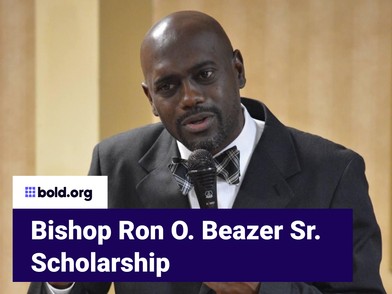
Bishop Ron O. Beazer Sr. Scholarship
Funded byKenyatta BeazerThis scholarship aims to honor the life of Bishop Ron O. Beazer Sr. by continuing his legacy of helping others reach heights that they were told were not possible.Funded byKenyatta BeazerThis scholarship aims to honor the life of Bishop Ron O. Beazer Sr. by continuing his legacy of helping others reach heights that they were told were not possible.Eligibility Criteria:
- Education Level: High school senior
- Race: African American
- State: Maryland
- Background: Community service, non-profit, or volunteering experience
Amount:$500Deadline:Nov 04, 2023One Click ApplyScholarship is awarded to
1 winner20
Sammy Meckley Memorial Scholarship
Funded byMeckleyThis scholarship aims to honor the life of Sammy Meckley by supporting students in Maryland who are involved in extracurricular activities.Funded byMeckleyThis scholarship aims to honor the life of Sammy Meckley by supporting students in Maryland who are involved in extracurricular activities.Eligibility Criteria:
- Education Level: High school junior or senior
- State: Maryland
- Experience: Involved in extracurricular activities
Amount:$500Deadline:Apr 01, 2024One Click ApplyScholarship is in review21
Sarah F. Watson and James E. Dashiell Scholarship
Funded byNasir Neal-WatsonThis scholarship will support students attending the University of Maryland Eastern Shore.Funded byNasir Neal-WatsonThis scholarship will support students attending the University of Maryland Eastern Shore.Eligibility Criteria:
- Education Level: Undergraduate
- School: University of Maryland Eastern Shore
Amount:$1,000Deadline:Dec 15, 2022One Click ApplyScholarship is awarded to
2 winners22
Marcarelli Community Spirit Scholarship
Funded byJustin MarcarelliThis scholarship aims to support high school seniors in Maryland who are involved in their communities and are passionate about giving back.Funded byJustin MarcarelliThis scholarship aims to support high school seniors in Maryland who are involved in their communities and are passionate about giving back.Eligibility Criteria:
- Education Level: High school senior
- Location: Maryland
- Community Involvement: Athletics, volunteer work, etc.
Amount:$2,000Deadline:Mar 30, 2023One Click ApplyScholarship is awarded to
2 winners23
Michael C. Overholser Memorial Scholarship
Funded byOverholser FamilyThis scholarship aims to honor the memory of Michael Overholser by supporting students who are passionate about music.Funded byOverholser FamilyThis scholarship aims to honor the memory of Michael Overholser by supporting students who are passionate about music.Eligibility Criteria:
- Education Level: High school senior
- State: Maryland
- Passion: Involved in music or plan to pursue music in college
Amount:$2,295Deadline:Apr 16, 2024One Click ApplyScholarship is in review24
Lulu Scholarship for Music Vocation
Funded byGuin Records LLCThis scholarship seeks to honor the impact of Lulu by supporting aspiring artists pursuing their dreams in the music industry.Funded byGuin Records LLCThis scholarship seeks to honor the impact of Lulu by supporting aspiring artists pursuing their dreams in the music industry.Eligibility Criteria:
- Education Level: High school junior or senior
- Field of Interest: Music
Amount:$1,100Deadline:Aug 30, 2023One Click ApplyScholarship is awarded to
1 winner25
HomeCare.com Nursing Scholarship
Funded byCareSaveThis scholarship is designed to provide equitable opportunities for prospective Black nurses to excel in their studies and pending career.Funded byCareSaveThis scholarship is designed to provide equitable opportunities for prospective Black nurses to excel in their studies and pending career.Eligibility Criteria:
- Major of interest: Nursing/ADN
- State: Pennsylvania, Maryland, Illinois, New York, Michigan, Georgia, Ohio, Virginia, North Carolina, Texas, Arizona, or Alabama
Amount:$8,000Deadline:Jul 01, 2021One Click ApplyScholarship is awarded to
3 winners26
Youth Civic Engagement Scholarship
Funded byAnna KellyThis scholarship aims to support students who are passionate about civic engagement in the DMV area.Funded byAnna KellyThis scholarship aims to support students who are passionate about civic engagement in the DMV area.Eligibility Criteria:
- Education Level: High school junior or senior
- Background: Financial need
- State: Virginia, Maryland, or Washington, D.C.
- Experience: Advocacy for a specific cause or has worked as a volunteer in politics
Amount:$1,000Deadline:Mar 01, 2024One Click ApplyScholarship is awarded to
1 winner27
Treasure for Orphans Scholarship
Funded byFlavia EtoundiThis scholarship aims to support students in Maryland who have lost one or both parents so that they have the support necessary to continue their education.Funded byFlavia EtoundiThis scholarship aims to support students in Maryland who have lost one or both parents so that they have the support necessary to continue their education.Eligibility Criteria:
- Education Level: High school senior or undergraduate student
- GPA: 3.0 or higher
- State: Maryland
- Background: Underrepresented minority
- Family: Has lost one or both parents
Amount:$500Deadline:Oct 01, 2022One Click ApplyScholarship is awarded to
1 winner28
Korean Men and Women Scholarship
Funded bySihyeon Shelley YuThis scholarship will support a Korean student in Virginia, Washington D.C., or Maryland.Funded bySihyeon Shelley YuThis scholarship will support a Korean student in Virginia, Washington D.C., or Maryland.Eligibility Criteria:
- Education Level: High school senior or undergraduate
- Race/Ethnicity: Korean
- GPA: 3.0 or higher
- State: Virginia, Maryland, or Washington D.C.
Amount:$500Deadline:Oct 01, 2023One Click ApplyScholarship is awarded to
1 winner29
Are you a student in Maryland wondering how you can ease the financial burden of pursuing higher education? You're not alone. Many students across the state face the challenge of student debt. Luckily, Maryland offers a range of scholarships to help lighten the load and make your dreams of a college education more attainable.
At Bold.org, we understand the importance of higher education and the burden that comes along with it. That's why we offer scholarship awards to students all over the nation, including international students studying in the U.S.
Create an account on Bold.org and use the scholarship search feature to filter through hundreds of exclusive scholarships.
Education Opportunities in Maryland
Maryland is a hub for higher education, with many colleges and universities that cater to a wide range of academic interests. The state boasts renowned research institutions such as Johns Hopkins University, University of Maryland, and Towson University, which are at the forefront of cutting-edge research and innovation.
In addition to these prestigious universities, Maryland is also home to a vibrant community college system that provides accessible and affordable education to students across the state. Maryland community colleges like Montgomery College and Howard Community College offer a diverse range of programs and certificates, allowing students to gain valuable skills and knowledge for their chosen career paths.
Costs of a College Education in Maryland
When considering the cost of attending college in Maryland, it's important to take into account tuition, fees, room and board, textbooks, and other miscellaneous expenses. On average, tuition and fees for in-state students at public four-year institutions in Maryland amount to around $10,000 per year, while private institutions may have significantly higher costs. These figures, combined with the ever-rising costs of living, can make pursuing higher education seem financially out of reach for many.
It's worth noting that financial aid options are available to help offset the costs of a college education in Maryland. Students can apply for federal grants, scholarships, and loans to help cover tuition and living expenses. Additionally, many colleges and universities offer their own institutional aid packages to eligible students based on financial need or academic merit. By exploring these financial aid opportunities, students can make attending college more affordable and accessible.
Furthermore, the cost of textbooks and course materials can also add a significant financial burden to students. In recent years, the rising prices of textbooks have become a concern for many college students. To combat this issue, some students opt to buy used textbooks, rent books, or utilize online resources to access course materials at a lower cost.
Additionally, some professors are exploring open educational resources (OER) as a way to provide students with free or low-cost alternatives to traditional textbooks, helping to alleviate the financial strain on students.
Are you considering a private career school? Check out our career guide to help you determine if the career you're seeking is right for you.
Student Debt in Maryland
The burden of student debt is a pressing issue across the nation, and Maryland is no exception. With an average debt of $30,000 per graduate, many young professionals in the state are starting their careers with substantial financial obligations.
This debt can have long-term implications, impacting individuals' ability to save for the future, purchase homes, or start families. It's essential for Maryland students to explore all available scholarship opportunities to help alleviate this burden.
Moreover, the issue of student debt in Maryland is further exacerbated by the rising cost of higher education in the state. Public universities in Maryland have seen tuition rates steadily increase over the past decade, outpacing inflation and putting additional strain on students and their families. This trend has led to a growing number of students relying on loans to finance their education, contributing to the overall student debt crisis in the state.
As the state grapples with these challenges, policymakers and education advocates are working to find solutions to address the student debt crisis in Maryland. Initiatives such as financial literacy programs, debt counseling services, and increased funding for need-based scholarships are being considered to help students better manage their debt and make informed decisions about their education.
Despite the high prices for attending Maryland colleges, there are ways for eligible students to get help paying for the cost of attendance. These options include scholarships offered by individual universities, grants, federal financial assistance, and student loan forgiveness programs. To learn more about how student loan forgiveness works, visit our comprehensive guide to student loan forgiveness.
Best Scholarships for Maryland students
Fortunately, Maryland offers a wide range of scholarships specifically designed to assist local students in pursuing their educational goals. Let's take a closer look at some of the most noteworthy scholarships for Maryland students:
Scholarships for High School Seniors in Maryland
As a high school senior, you may be feeling a mix of excitement and trepidation about your future. Thankfully, there are several scholarships available exclusively for current high school seniors. These scholarships often target students who have achieved academic excellence, demonstrated leadership skills, or contributed to their communities. Examples include the Maryland Higher Education Commission's (MHEC) Annual Awards and the Stavros Niarchos Foundation Scholarship.
No matter where you're from or what your interests are, there are high school senior scholarships available for you. Take a look at more scholarships for high school students.
Maryland Nursing Scholarships
If you aspire to pursue a career in nursing, Maryland offers various scholarships to support your educational journey. Nurses play a huge role in our healthcare system, and these scholarships aim to alleviate the financial strain on aspiring nursing professionals. The Maryland Nursing Scholarship Program is one such program that provides financial assistance to Maryland residents pursuing degrees in nursing.
Furthermore, Maryland is home to Johns Hopkins University, which specializes in medicine. Since Maryland hosts such a prestigious medical university, there are many students studying medicine who are looking for scholarships to help pay for medical school. Bold.org has a variety of nursing scholarships to help medical students pay the high costs of extra schooling.
Nursing students in Maryland can look for scholarships listed on the nursing page provided. Additionally, medical students can look at the scholarship search page, which has specific categories under both "Healthcare" and "Nursing." Use these features to assist in your medical scholarship search.
Military and First Responder Scholarships in Maryland
In recognition of the sacrifices made by members of the military and first responders, Maryland offers scholarships specifically tailored to support these individuals in pursuing higher education. These scholarships aim to show appreciation for their service while easing the financial burden associated with college. Examples include the Maryland National Guard Scholarship Program and the Maryland State Firemen's Association Scholarship.
Maryland also has a special scholarship program called the Conroy Memorial Scholarship Program, which gives extensive scholarships to children pursuing undergraduate degrees. These scholarships are meant specifically for students with an immediate family member who has passed away while serving in the United States Armed Forces or who has incurred a serious disability as a result of service.
Maryland Legislative Scholarships
Maryland provides state delegate scholarship awards to students who are residents of Maryland. This scholarship program is open to high school seniors and college students who are from Maryland and plan to or are currently pursuing full-time higher education. These scholarships, specific to Maryland residents, are provided through the state government. To learn more, see information on the Delegate Scholarships informational page. Various other legislative scholarships exist to help Maryland students.
How to Apply for Scholarships in Maryland
For Maryland students looking to secure scholarships, here's a streamlined approach to navigate the process effectively:
Start with Maryland-Specific Opportunities
Begin your search by focusing on scholarships specifically designed for Maryland residents. Organizations like the Maryland Higher Education Commission offer a range of options tailored to locals. It is especially helpful for local students to apply for local scholarships as it increases their chances of becoming scholarship recipients.
Utilize High School Resources
Tap into resources available at your Maryland high school, such as guidance counselors and career centers. They can provide personalized advice and information on local scholarships.
Prioritize Your Applications
Identify scholarships that best match your profile, considering factors like academic achievements, extracurricular activities, and intended major. Focus your efforts on these to maximize your chances.
Gather Essential Documents
Collect all necessary documentation early on, including transcripts, recommendation letters, and any required essays. This will streamline the application process for each scholarship.
Adhere to Deadlines
Keep a detailed calendar of scholarship deadlines to ensure timely submissions. In Maryland, many scholarships have deadlines in the spring for the following academic year, so plan accordingly.
By focusing on these key steps, Maryland students can efficiently navigate the scholarship application process, improving their chances of securing financial support for their educational pursuits.
Are you a transfer student looking for ways to apply for scholarships? Here at Bold.org, we encourage transfer students to apply for our scholarships tailored specifically to transfer students to maximize their chances of winning.
Tips for Applying for Scholarships in Maryland
When applying for scholarships, it's essential to present yourself in the best possible light. Here are a few tips to improve your chances of receiving a scholarship:
Initiate Early
Kickstart your scholarship hunt well ahead of deadlines. This foresight not only allows for thorough preparation but also ensures you don’t miss out on any opportunities, especially those exclusive to Maryland.
Adhere to Guidelines
Each scholarship has its unique set of rules. Ensure you meticulously follow these instructions to avoid any disqualification.
Highlight Your Distinctiveness
What sets you apart? Maryland students come from diverse backgrounds and have unique stories. Emphasize your individual journey, accomplishments, and future objectives to stand out.
Craft a Compelling Personal Statement
Your personal statement is your chance to shine. It should reflect who you are and your academic and professional goals, particularly how you intend to contribute to your chosen field and community.
Solicit Constructive Feedback
Leverage your local network — teachers, mentors, or family members familiar with your academic and personal growth can offer invaluable insights to refine your application.
Meticulous Proofreading
Attention to detail matters. Ensure your application is impeccable and free from grammatical errors or typos to convey professionalism and dedication.
Apply Broadly
Don’t restrict yourself; the more scholarships you apply for, the greater your chances of success. Explore a variety of scholarships, from Maryland-specific to broader options.
By following these tips, you'll be well on your way to securing scholarships that can help make your educational aspirations a reality.
Attention degree-seeking undergraduates! Check out these exclusive scholarships for undergrads!
Additional Resources for Maryland Students
Maryland Higher Education Commission
The MHEC is full of information for college-bound students and those already pursuing higher education. It provides details on financial aid programs, including scholarships and grants specifically for Maryland residents, state financial aid applications (such as the Maryland State Financial Aid Application - MSFAA), and resources for academic planning and college preparation.
Maryland Public Libraries
Various public libraries across Maryland offer resources for college students, including access to academic journals, study materials, and research assistance. The Maryland State Library Agency oversees these resources.
Southern Regional Education Board
Maryland is a member of the SREB, which provides various programs and services to students, including the academic common market, allowing students to pay in-state tuition rates for certain programs not available in their home state.
Have you applied to an institution of higher education and are in search of college scholarships? Look no further! Here at Bold.org, we have scholarships for all grade levels, including graduate students. Apply today!
No matter what your education status is or the type of background you have, there are scholarships available for you to apply to. Bold.org offers many scholarships. In order to get access to these exclusive opportunities, start by creating your free Bold.org profile. If you click on any of the scholarships listed, you will be directed to where you can create an account.
Yes, private colleges accept need-based scholarships and grants. Each school's financial procedure is slightly different, so if you aren't sure how scholarships work for a specific school, reach out to their financial office. Generally, need-based scholarships are accepted at all schools. Additionally, private schools tend to offer many scholarships to help their students pay for college attendance. Do some research on the schools you are interested in, but continue applying for scholarships because there is a high chance any financial aid you receive will be accepted.
Yes, some Maryland scholarships are available to students attending private career schools in the state. It's important to verify each scholarship's eligibility criteria to ensure your institution qualifies.
